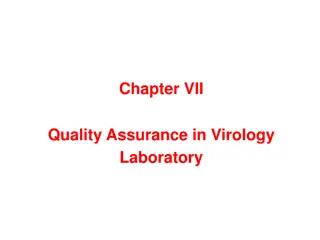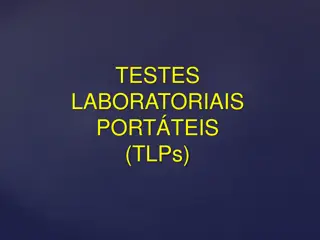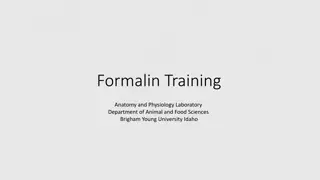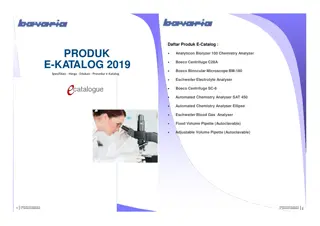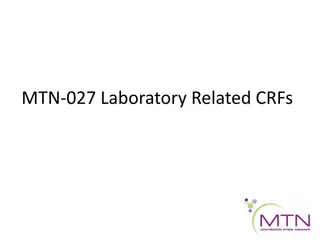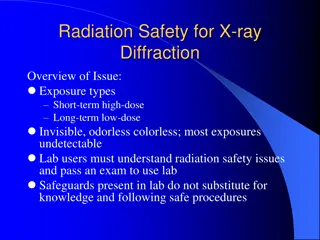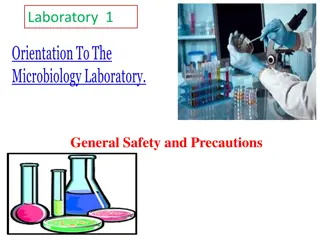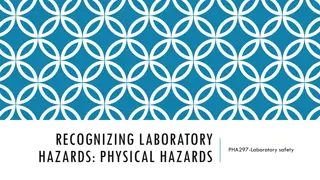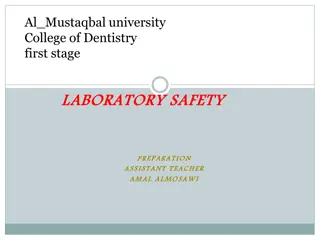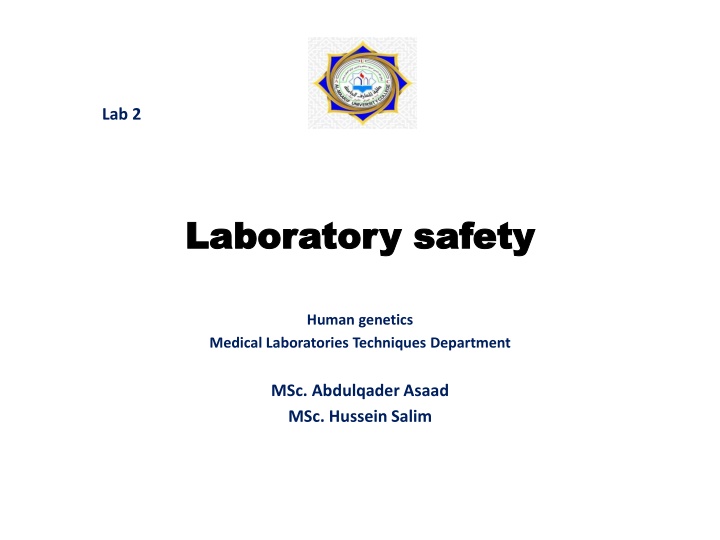
Laboratory Safety Guidelines for Student Labs
This content provides essential safety rules and precautions for working in a laboratory setting, focusing on general safety rules and specific guidelines for handling glassware. The guidelines cover aspects such as wearing safety goggles, proper handling of chemicals, and avoiding unsafe practices in the lab. These measures aim to promote a safe and productive learning environment for students conducting experiments.
Download Presentation

Please find below an Image/Link to download the presentation.
The content on the website is provided AS IS for your information and personal use only. It may not be sold, licensed, or shared on other websites without obtaining consent from the author. If you encounter any issues during the download, it is possible that the publisher has removed the file from their server.
You are allowed to download the files provided on this website for personal or commercial use, subject to the condition that they are used lawfully. All files are the property of their respective owners.
The content on the website is provided AS IS for your information and personal use only. It may not be sold, licensed, or shared on other websites without obtaining consent from the author.
E N D
Presentation Transcript
Lab 2 Laboratory safety Laboratory safety Human genetics Medical Laboratories Techniques Department MSc. Abdulqader Asaad MSc. Hussein Salim
General Safety Rules General Safety Rules 1. Listen to or read instructions carefully before attempting to do anything. 2. Wear safety goggles to protect your eyes from chemicals, heated materials, or things that might be able to shatter. 3. Notify your teacher if any spills or accidents occur.
General Safety Rules General Safety Rules 4. After handling chemicals, always wash your hands with soap and water. 5. During lab work, keep your hands away from your face. 6. Tie back long hair.
General Safety Rules General Safety Rules 7. Roll up loose sleeves. 8. Know the location of the fire extinguisher, fire blanket, eyewash station, and first aid kit. 9. Keep your work area uncluttered. Take to the lab station only what is necessary.
General Safety Rules General Safety Rules 10. It is suggested that you wear glasses rather than contact lenses. 11. Never put anything into your mouth during a lab experiment. 12. Clean up your lab area at the end of the laboratory period. 13. Never horse around or play practical jokes in the laboratory.
Glassware Safety 1. Chipped or cracked glassware should not be used. Show it to the teacher. 2. Broken glassware should not be disposed of in a classroom trash. There is a special glass disposal container for it. 3. When pouring liquids into glassware, make sure the container you are pouring into is resting on a table at least a hands breadth from the edge.
Glassware Safety 4. Pour down a glass stirring rod to prevent liquids from splattering. 5. If a piece of glassware gets broken, do not try to clean it up by yourself. Notify the teacher. 6.When inserting glass tubing into a rubber stopper, apply a lubricant like glycerin to the glass and use a twisting motion.
Glassware Safety 7. Do not place hot glassware in water. Rapid cooling may make it shatter.
Chemical Safety 1.Wear protective goggles and a lab coat whenever heating or pouring hazardous chemicals. 2.Never mix chemicals together unless you are told to do so (and then only in the manner specified). 3.Never taste any chemicals (you should never taste anything in the lab).
Chemical Safety 4.If you need to smell the odor of a chemical, waft the fumes toward your nose with one hand. put your nose over the container and inhale the fumes. 5.Never pour water into a concentrated acid. Acid should be poured slowly into water. Do not
Chemical Safety 6. Follow the instructions of your teacher when disposing of all chemicals. 7. Wash your hands after handling hazardous chemicals.
Electrical Safety 1. Lay electrical cords where no one can trip on them or get caught in them. 2. Be sure your hands and your lab area are dry before using electrical equipment. 3. Never poke anything into electrical outlets.
Electrical Safety 4. Unplug cords by pulling the plug and not the cord. 5. Unplug all electrical equipment at the end of the lab period.
Heating Safety 1. Let burners and hotplates cool down before touching them. Test to see if they are cool enough by bringing the back of your hand close to them. 2. Use tongs and/or protective gloves to handle hot objects. 3. Never reach across an open flame or burner.
Heating Safety 4.The only type of glassware that may safely be heated is either Kimax or Pyrex. 5.Always point the top ends of test tubes that are being heated away from people. 6. When heating a test tube, move it around slowly over the flame to distribute the heat evenly.
Heating Safety 7. Only glassware that is thoroughly dry should be heated. 8. Heat glassware by placing it on a wire gauze platform on a ring stand. Do not hold it in your hand.
Heating Safety 9.When lighting a burner, wait until the striker is in place before you turn on the gas. 10.The amount of air can be adjusted by the air supply valve below the tube of the burner. This regulates the flame temperature and color. 11. Never leave a burner or hotplate unattended
First Aid Injury: Eyes What To Do: Flush eyes immediately with plenty of water for several minutes. If a foreign object is lodged in the eye, do not allow the eye to be rubbed.
First Aid Cuts, bruises What To Do: Do not touch an open wound without safety gloves. Pressing directly on minor cuts will stop bleeding in a few minutes. Apply cold compress to bruises to reduce swelling.
First Aid Injury: Fainting what To Do: Provide fresh air and have the person recline so that their head is lower than the rest of their body.
First Aid Injury: Spills on the skin What To Do: Flush with large quantities of water. For acid spills, apply baking soda solution. For base spills, apply vinegar or boric acid.
First Aid Injury: Electrical shock What To Do: Shut off the current at the source. Remove wire with rubber gloves. Alert the teacher immediately.





